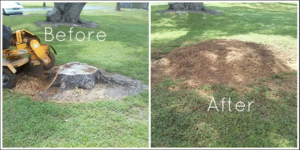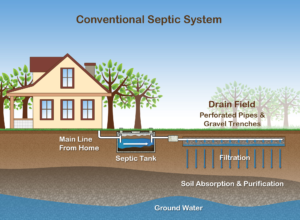Handyman Naperville IL can complete an array of tasks, from basic plumbing to repairing electrical cables. Many start their career in a temporary position before earning a permanent contract.
Good communication skills are required for managing clients, providing professional estimates, and achieving new business heights. These skills can also reduce misunderstandings and errors.

A handyman performs routine repairs and maintenance tasks on a property to keep it in good condition. They have the skills and knowledge to work on a wide range of home improvement projects, from fixing broken windows to installing new lighting fixtures. They can also help with home safety assessments, plumbing problems, and electrical issues. Handymen can provide valuable support to homeowners, as they can address issues quickly and effectively.
Aside from repairing broken items, handymen also carry out installation services such as assembling furniture or setting up shelving units. This ensures that everything is in its proper place and ready to be used by occupants. Handymen can also install energy-efficient lighting, insulation, and heating systems to help reduce utility bills.
Homeowners should look for a handyman who takes pride in their work and cares about the outcome of each job. They should take the time to explain their process and answer any questions in a friendly manner. This will show that they understand that homeowners may be intimidated by some aspects of home maintenance and repair, and that they are willing to go above and beyond to make the process as smooth as possible.
Maintenance tasks are essential for keeping facilities in top condition. This can prevent minor problems from escalating into costly repairs and disruptions to business operations. In addition, regular maintenance can extend the lifespan of equipment and facilities.
Handymen can also assist with health and safety compliance by addressing potential hazards, such as loose floorboards or faulty wiring. This can create a safer workplace for employees and visitors, as well as lower the risk of accidents and injuries.
Whether a home or commercial building, a properly maintained space can improve its aesthetic appeal and increase its value. In addition, a well-maintained property can be more appealing to prospective buyers, allowing homeowners and real estate agents to sell properties faster. Handymen can make quick and easy repairs to enhance the appearance of a property, preparing it for showings and open houses. This will help expedite the selling process and lead to better offers for homeowners.
Repairs
A handyman can work in various settings, from residential homes to retail stores and industrial buildings. Their tasks can be as simple as repairing a broken window or as complex as installing new kitchen cabinets. They can also handle other carpentry jobs, such as building furniture or resanding wooden surfaces. In a commercial property, they might be responsible for fixing lighting, heating and air conditioning systems to improve energy efficiency and comfort for tenants or employees.
A common problem in commercial properties is the formation of cracks in walls and foundations. These can lead to serious structural problems and pose a risk to the safety of occupants. Regular inspections can identify these issues and arrange for professional repairs to be carried out. Handymen can also help maintain a safe and healthy workplace by identifying safety risks and carrying out regular maintenance tasks.
Keeping facilities well-maintained can prevent costly repairs and downtime in the future. Regular inspections by a handyman can detect issues that may cause damage such as leakages, loosening tiles and electrical problems. The handyman can then repair these issues before they become more severe and costly.
The handyman can also provide a range of services to keep a premises in good condition, including painting, decorating and landscaping. This can improve the visual appeal of a facility and increase its value. Handymen can also perform basic plumbing jobs, such as replacing taps and toilets and repairing leaks.
When choosing a handyman, it is important to look for one with experience and a good track record. They should have the relevant qualifications, licenses and insurance coverage to ensure they meet industry standards. They should also be able to demonstrate effective communication skills and professionalism.
When hiring a handyman, make sure they can provide references from previous clients and give a detailed estimate of the work to be completed. This will avoid misunderstandings and ensure that all costs are clearly outlined. It is also recommended to choose a contractor that specialises in the type of maintenance required, as they will have more expertise and can save you money in the long run.
Renovations
Handymen are able to perform a wide variety of renovation projects that are outside of the scope of electricians, plumbers and other trade professionals. This versatility saves homeowners time and money as they don’t have to find and hire a separate contractor for specialized work.
During renovations, a handyman can tackle jobs like replacing drywall, laying new tile, fixing leaking roofs and improving insulation to help lower heating and cooling costs. They can also install appliances and fixtures, ensuring that they are properly wired and connected to the proper power sources.
The right handyman can make a major difference in the quality of a home renovation project. In addition to completing the necessary repairs, they will ensure that all renovations comply with local building codes and ordinances. They will also be able to identify potential issues and recommend solutions before they arise, such as a leaky faucet that could result in costly water damage.
When working with a handyman, it’s important to discuss the goals of your renovation project and how they will impact the overall look and feel of your space. It’s a good idea to share photos, Pinterest boards or sketches with your contractor so they can better understand your vision. Additionally, it’s essential to establish clear expectations and budgets upfront.
A skilled handyman will be able to communicate clearly and concisely in both layman’s terms and technical terms, and they should be able to explain why some types of work fall outside of their skill set. They should also be willing to recommend someone else if they can’t complete a particular job.
As with any home improvement project, hiring the right handyman is crucial for success. When searching for a qualified professional, look for a reputable service that has excellent references and a proven track record. It’s also a good idea to check on various online reputation sites and review services by other homeowners before making a decision. When working with a handyman, always ask to see their Certificate of Insurance before they start any work. At Thimble, we offer on-demand insurance for handymen that allows them to purchase a policy in just minutes and instantly receive a COI via email. This ensures that you can be confident in the work they do, and that you’re covered for liability should anything go wrong.
Painting
A fresh coat of paint can make a world of difference to a home. However, painting can be a dangerous job. It requires specialized knowledge, equipment, and skills to do properly. Therefore, it’s important to hire a professional painting and handy company that has the necessary experience and expertise. This will ensure that your walls are in good hands and that you get a high-quality finish that will last a long time.
Handymen are often called upon to do painting tasks, such as touch-ups or repainting a single wall. However, many companies also offer a full range of painting services, including interior and exterior painting, staining, and wood finishing. This means that they can help you bring a whole new look to your home, or even give it a completely different style altogether.
They can also handle more detailed projects, such as sanding and prepping surfaces before they’re painted or applying a stain, so that the finished product is smooth and crisp. In addition, they can perform various installation jobs, such as repairing cracks in plaster or drywall and installing trim or baseboards.
Another benefit of hiring a painting and handyman company is their ability to work safely at height. This is especially important when working on upper levels of a building or a roof. This makes it safer for the homeowner and helps to reduce the risk of injury or property damage.
When considering hiring a handyman or a painting and handy company, it’s vital to evaluate their experience, credentials, reviews, and cost. You should also check whether they’re licensed and insured to protect yourself from any possible issues that may arise during the project.
Handymen are often more affordable than specialized painting contractors, making them a great choice for budget-conscious homeowners. On the other hand, they often lack the specialized skills and techniques that painting contractors possess. Therefore, they might not be able to provide the quality results that you’re looking for. Moreover, they might not be able to accommodate large or extensive projects. So, if you’re thinking of having a large and extensive painting job done in your home, it’s better to opt for a professional painting company.








